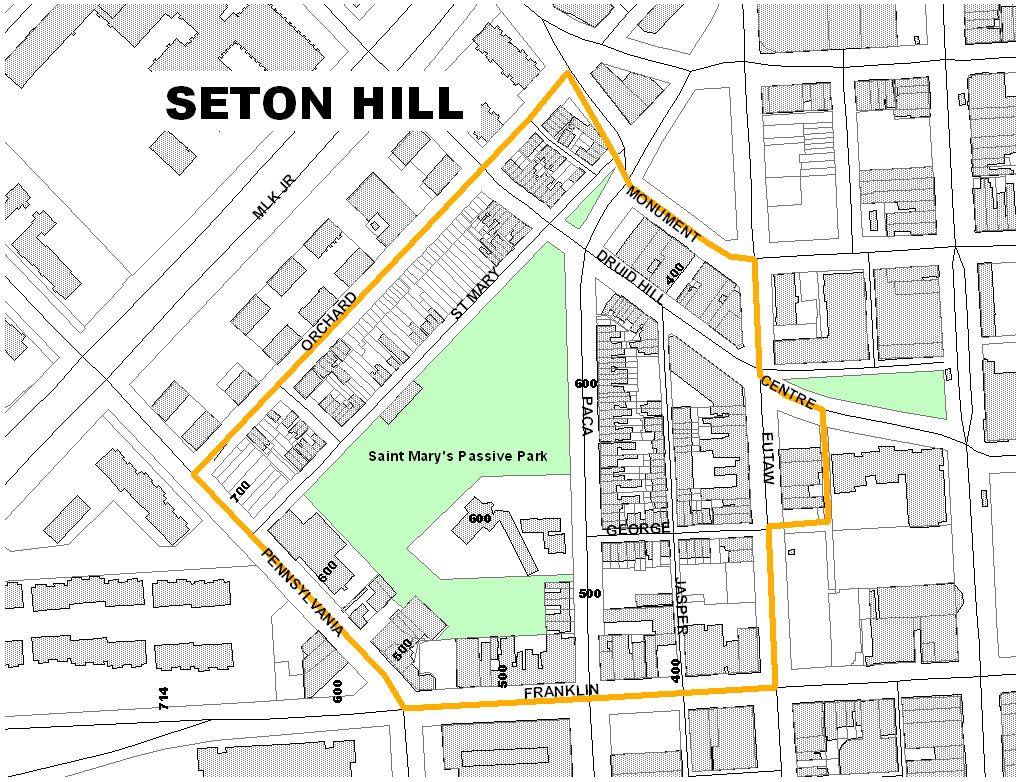Seton Hill
National Register of Historic Places 9/30/75
Certified Historic District for Tax Incentives 6/3/80
Description
 Seton Hill is primarily a residential rowhouse neighborhood that surrounds Saint Mary's Park in the western portion of downtown Baltimore. It is roughly bounded by Orchard Street, Monument Street, Eutaw Street, Franklin Street and Pennsylvania Avenue. Most of the buildings in the district are small two and three story high gabled roof houses designed in the traditional Baltimore rowhouse mold. Some of the later buildings have cornices and a few large houses are extant on North Paca Street.
Seton Hill is primarily a residential rowhouse neighborhood that surrounds Saint Mary's Park in the western portion of downtown Baltimore. It is roughly bounded by Orchard Street, Monument Street, Eutaw Street, Franklin Street and Pennsylvania Avenue. Most of the buildings in the district are small two and three story high gabled roof houses designed in the traditional Baltimore rowhouse mold. Some of the later buildings have cornices and a few large houses are extant on North Paca Street.
The buildings on the edge of the district along Eutaw Street and Franklin Street were either built for or converted to commercial usage. Many of these buildings feature storefronts and a few have been covered with formstone. Saint Mary's Seminal Chapel, an early Gothic building and the Mother Seton House, an early gabled roof house, form the centerpiece of the district along with the district's major new open space, Saint Mary's Park.
Significance
Seton Hill is architecturally significant as one of Baltimore's earliest intact rowhouse neighborhoods. Historically, the area is linked to Saint Mary's Seminary. The first Catholic Seminary in the United States and Elizabeth Ann Seton, the first American canonized saint. Mother Seton was also the founder of the Sisters of Charity, the first order of nuns founded in this country. While most of the designers of housing in Seton Hill are unknown, the master architect, Maximillian Godefrey, was responsible for the Saint Mary's Seminary Chapel. This building is recognized to be the first significant Gothic Revival church built in America.
The small houses of Seton Hill, the juxtaposition of commercial and residential buildings along main thoroughfares, the changes and alterations that individual buildings and the community in general have gone through in the early twentieth century and the community's association with the early nineteenth century development of the Catholic Church in Baltimore has yielded important information on the growth and change of local neighborhoods throughout the nineteenth and twentieth centuries